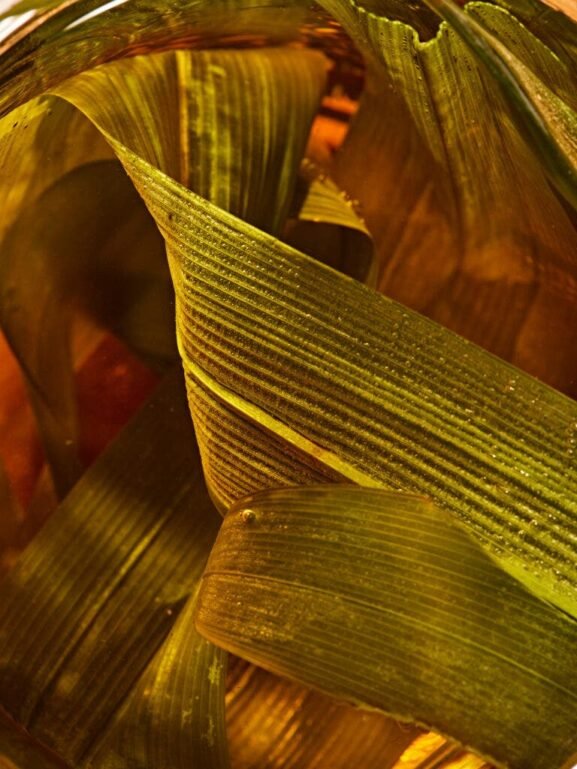Inside the Carménère Renaissance in Chile
On a spring day in 1994, the ampelographer Jean Michel Boursiquot discovered that some “Merlot” grapes growing in a vineyard in Chile were actually Carménère—a grape known for making full-bodied wines with a deep red hue and aromas of black fruit, herbs and spice.
This revelation not only changed the history of this forgotten French grape, but also shook Chile’s wine industry. After all, the varietal was believed extinct, due to the phylloxera devastation in the 19th-century.
“Discovering that what had been believed to be Merlot was not actually Merlot had a significant impact on the industry,” says Ana Maria Cumsille, the current winemaker at Viña Carmen, the Maipo Valley-based producer where Boursiquot made his discovery thirty years ago this month. “It took winemakers some time to begin bottling wines labeled as Carménère.”
Since then, Chilean producers have given Carménère a second chance and the varietal has factored heavily in Chile’s most iconic wines.
A Brief History of Carménère in Chile
In the past, Carménère vines often grew alongside Merlot vines in Chile. However, even before Boursiquot’s discovery, local winemakers noticed that some of their Merlot ripened later than usual and exhibited a higher presence of pyrazines, the compound that gives wines a green bell pepper or leafy presence. They referred to this as “Merlot tardío.”
Once Boursiquot confirmed that this was an entirely different grape variety, winemakers began to categorize the Carménère vineyards and took on the challenge of learning to cultivate a grape that was largely unknown at that time.
Carménère Enters the Modern Era
With market shifts and climate change driving the Chilean industry towards premiumization, winemakers are currently focusing on vineyard management and site selection for all grape varieties, including Carménère. This has resulted in a new style of wine—distinct from the overripe wines of the past—and has led to the emergence of the Apalta and Peumo valleys as premier locations.
Cumsille explains that the warm weather in Apalta Valley allows the grape to ripen well and attributes the quality of her Delanz Carménère to the age of the vines found there, some of which are nearly a hundred years old.
Apalta is in the Colchagua Valley and is surrounded by the Coastal Mountain Range, which forms a semi-circular shape resembling a Greek theater that faces south. The vines are planted in both flat and hilly areas of the valley.
Renowned wineries such as Montes and Lapostolle Wines were built in Apalta, while many others source grapes from their own vineyards as well as from those owned by small growers.
“Carménère is a grape that has a strong vegetal character that inherits from its parents, Cabernet Franc and Gros Cabernet. That’s why it thrives in regions with ample sunlight and soils that retain enough water to support its growth through the season,” says Sebastian Labbe, Viña Santa Rita’s head winemaker. He also notes that the varietal excels in clay loam soils like those found in Apalta.
How Producers are Experimenting with Carménère
Viña Santa Rita produces two wines that exemplify the dominant styles of Carménère available today, with some exceptions. Their Floresta Carménère showcases a fresh expression of the varietal, where herbal notes and a balanced amount of fruit come together on a vibrant palate. In contrast, Pewën de Apalta represents a more elegant style, featuring silky tannins and concentrated flavors, while still maintaining a sense of freshness.
Labbe explains that in crafting these wines, he focuses on the vigor of the vine throughout the different stages of its growth and early harvesting, among other considerations. Additionally, wines are fermented at lower temperatures and he does a more gentle extraction, which he refers to as an “infusion.”
Winemaker Marcio Ramirez, who oversees the production for all Concha y Toro’s Carménère wines, agrees that an important aspect to consider when managing this grape is the selection of the terroir.
In the ’80s, Concha y Toro noticed that the then-called “Merlot tardío” thrived in Peumo, leading them to plant a few acres in the valley, which has now expanded to over a thousand acres of the grape.
let adType_673d18bf3aebf = “leaderboard”;
// Create the element
let script_673d18bf3aebf = document.createElement(“script”);
script_673d18bf3aebf.innerHTML = `
window.googletag = window.googletag || {cmd: []};
googletag.cmd.push(function() {
var mapping;
// Size mapping for leaderboard ads
var lbmapping = googletag.sizeMapping()
.addSize([1024, 0], [[970, 250], [970, 90], [1, 1], [728, 90]])
.addSize([728, 0], [[728, 90], [1, 1]])
.addSize([320, 0], [[1, 1], [300, 50], [300, 100], [320, 50], [320, 100]])
.addSize([0, 0], [[1, 1], [320, 50]])
.build();
// Size mapping for med rectengle ads
var medrecmapping = googletag.sizeMapping()
.addSize([1024, 0], [[300, 600],[300, 250]])
.addSize([728, 0], [300, 250])
.addSize([320, 0], [[1, 1],[300, 250]])
.addSize([0, 0], [[1, 1], [300, 250]])
.build()
//var lbSlots = [[[320, 100], [728, 90], [300, 100], [1, 1], [300, 50], [970, 250], [320, 50], [970, 90]]];
//var medrecSlots = [[300, 600], [1, 1], [300, 250]];
mapping = adType_673d18bf3aebf == ‘leaderboard’ ? lbmapping : medrecmapping;
googletag.defineSlot(‘/39808611/article_page/article_leaderboard_1’, [],
‘div-gpt-ad-673d18bf3aebf’).addService(googletag.pubads()).defineSizeMapping(mapping);
googletag.pubads().enableSingleRequest();
googletag.pubads().collapseEmptyDivs(); //maybe optional
googletag.pubads().refresh(); //maybe optional
googletag.enableServices();
});
`;
//checking to see if script is inserted in the header successfully
if (document.head.appendChild(script_673d18bf3aebf)) {
//variable holding the rendering body
document.getElementById(“gptBodySection-673d18bf3aebf”).innerHTML = `
googletag.cmd.push(function() { googletag.display(div-gpt-ad-673d18bf3aebf); });
`;
}
Peumo, in the Cachapoal Valley, is encircled by the Coastal Mountain range and the Cachapoal River. Its climate is shaped by the Andes Mountains, and it has colluvial and alluvial soils over granite bedrock.
“Peumo has vineyards that produce wines with unique expressions,” says Ramirez. In 1998, the first vintage of Terrunyo Carménère was made to highlight the varietal’s character. The winery also produces another expression called Carmín de Peumo and the winemaker attributes its delicate structure and red fruit flavors to the valley’s soil, which includes clay, sand and silt.
Another important factor for him is to allow the true characteristics of Carménère to shine through.
“We started exploring a path of longer fermentation, reduced use of new oak barrels and even allowed some malic acid to remain in the wine to enhance its freshness,” says Ramirez. Over the past three years, he has been using native yeast for fermentation and a larger percentage of whole clusters, as this approach contributes to the wines’ freshness, “crunchiness” and depth.
The Pursuit of Terroir-Driven Wines
Carménère wines have evolved greatly over the last three decades, with various expressions found beyond Apalta and Peumo.
Producers, like Odfjell, create earthy and pure expressions of the wine in the Maule Valley.
Casa Silva offers another excellent expression of this variety made from grapes grown in the Cachapoal Valley’s Los Lingues vineyard, a 40-minute drive east from, and just over 1,000 feet higher in elevation than, Peumo.
In the pursuit of exploring the varietal’s potential, Terranoble produces two versions of the same wine, one also made in Los Lingues, near the Andes, and the other with coastal influence in Marchigüe.
Within Peumo, Viña La Rosa presents an interesting red, the Cornellana Gran Cru Carménère made in volcanic soils and featuring umami and graphite notes.
It’s undeniable that without the dedication of Chilean wineries to this challenging grape, the varietal might have remained in obscurity. Three decades in, they have not only rediscovered this grape variety but have also revitalized it.
let adType_673d18bf3b830 = “leaderboard”;
// Create the element
let script_673d18bf3b830 = document.createElement(“script”);
script_673d18bf3b830.innerHTML = `
window.googletag = window.googletag || {cmd: []};
googletag.cmd.push(function() {
var mapping;
// Size mapping for leaderboard ads
var lbmapping = googletag.sizeMapping()
.addSize([1024, 0], [[970, 250], [970, 90], [1, 1], [728, 90]])
.addSize([728, 0], [[728, 90], [1, 1]])
.addSize([320, 0], [[1, 1], [300, 50], [300, 100], [320, 50], [320, 100]])
.addSize([0, 0], [[1, 1], [320, 50]])
.build();
// Size mapping for med rectengle ads
var medrecmapping = googletag.sizeMapping()
.addSize([1024, 0], [[300, 600],[300, 250]])
.addSize([728, 0], [300, 250])
.addSize([320, 0], [[1, 1],[300, 250]])
.addSize([0, 0], [[1, 1], [300, 250]])
.build()
//var lbSlots = [[[320, 100], [728, 90], [300, 100], [1, 1], [300, 50], [970, 250], [320, 50], [970, 90]]];
//var medrecSlots = [[300, 600], [1, 1], [300, 250]];
mapping = adType_673d18bf3b830 == ‘leaderboard’ ? lbmapping : medrecmapping;
googletag.defineSlot(‘/39808611/article_page/article_leaderboard_2’, [],
‘div-gpt-ad-673d18bf3b830’).addService(googletag.pubads()).defineSizeMapping(mapping);
googletag.pubads().enableSingleRequest();
googletag.pubads().collapseEmptyDivs(); //maybe optional
googletag.pubads().refresh(); //maybe optional
googletag.enableServices();
});
`;
//checking to see if script is inserted in the header successfully
if (document.head.appendChild(script_673d18bf3b830)) {
//variable holding the rendering body
document.getElementById(“gptBodySection-673d18bf3b830”).innerHTML = `
googletag.cmd.push(function() { googletag.display(div-gpt-ad-673d18bf3b830); });
`;
}
Chilean Carménère Wines to Drink Right Now
Santa Rita 2021 Floresta Carmenere (Apalta)
A well-made Carménère that doesn’t need makeup to hide its nature and instead appeals to honest fruit flavors and subtle herbs, offering a delicious experience. It has aromas of berries intertwined with spices. The structured palate brings together sour cherries and strawberries blended with rosemary and black pepper that extend into a fresh finish. 93 points. Editor’s Choice. — Jesica Vargas
$400
Cask Cartel

TerraNoble 2021 Costa CA2 Carmenere (Colchagua Valley)
Winemaker Marcelo Garcia aims to show the different expressions of Carménère from the Andes and the coastal regions. This wine is sourced from vineyards 24 miles from the Pacific Ocean. A lovely combination of red and black fruit aromas creates an attractive bouquet. The fresh palate offers sweet baking spices, cherries and hints of dried herbs. Toasted oak flavors lengthen the finish. 91 points. — J.V.
$37
Wine.com

TerraNoble 2018 Andes CA1 Carmenere (Colchagua Valley)
With more than 20 years focusing on this grape variety, TerraNoble shows the potential of Carménère wines. This is fresh and opens with delicate notes of dried herbs over a basket of strawberry and cherry. It has a mineral character featuring earthy ripe cherry and bay leaf along with good acidity. Notes of tobacco linger in the delicious finish. 92 points. — J.V.
$150
Cask Cartel

Ventisquero 2021 Grey Glacier Single Block Trinidad Vineyard Carménère (Maipo Valley)
Touches of blackberries and toasted oak shape the nose of this Carménère from Maipo Valley. It’s fresh and has enough fruit and wood spice to balance its herbaceous character. 90 points. — J.V.
$13
Fine Wine and Good Spirits

Besoain Wines 2020 Single Vineyard Carménère (Maipo Valley)
This Carménère exhibits aromas of sweet spices on the nose. Cinnamon and nutmeg flavors are revealed on the smooth palate, followed by hints of red berries. 90 points. — J.V.
$20
Vinous Reverie

Casa Silva 2021 Microterroir De Los Lingues Carmenere (Colchagua Valley)
Herbs and a good amount of fruit flavors shape the character of this Carménère. Aromas of berries and eucalyptus are subtle on the nose. Optimal acidity and fine tannins back a steady flow of black and red fruit flavors elevated by a hint of white pepper and bay leaf. 92 points. — J.V.
$44
Wine of the Month Club

This wine comes from vines in Apalta within the Colchagua Valley, one of Carménère’s favorite spots in Chile. It opens with an inviting nose of oak spices and blueberry jam. Concentrated black-fruit flavors are bright on the palate. The finish is long, with hints of vanilla. 92 points. — J.V.
$22
Plum Market
More Chilean Wine Coverage
- Meet the boutique producers reinventing Chile’s wine scene.
- And get to know the heritage producers in Chile who are pouring history in a glass.
- The volcanic vines of Chile are yielding some of the country’s most exceptional wine.
- Inside Chile’s Indigenous wine movement.
- There’s a Chilean wine for every budget.
- The next time you want a chilled red, opt for a Chilean bottle.

From the Shop
Find Your Wine a Home
Our selection of wine glasses is the best way to enjoy a bottle’s subtle aromas and flavors.
The post Inside the Carménère Renaissance in Chile appeared first on Wine Enthusiast.

